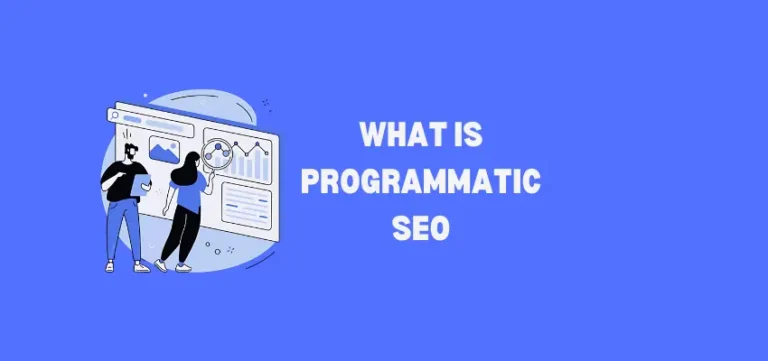Programmatic SEO is a strategy that leverages automation to create large-scale, keyword-targeted landing pages to improve organic search visibility. Instead of manually writing each page, programmatic SEO utilizes templates and structured data to generate thousands of pages at scale, optimizing them for long-tail and low-competition keywords.
Many successful businesses, including travel websites, eCommerce platforms, and directory-based businesses, use programmatic SEO to capture search demand efficiently.
For a deeper dive into SEO and content marketing, check out our guide on SEO and Content Marketing: A Symbiotic Relationship.

Why is Programmatic SEO Important in 2025?
With Google continuously refining its algorithm to prioritize high-quality, intent-driven content, programmatic SEO has become a crucial strategy for websites looking to scale.
Key benefits include:
Scalability: Create thousands of keyword-rich pages with minimal effort.
Increased Traffic: Capture a broad range of search queries that traditional SEO might overlook.
Enhanced Automation: Reduce manual effort by leveraging templates and structured data.
Higher Ranking Potential: Targeting long-tail and localized queries can boost overall domain authority.
To optimize your programmatic SEO content structure, check out SEO-Friendly Website Architecture: How to Build a Site That Ranks.
How to Implement Programmatic SEO Successfully
Step 1: Identify Your Keywords and Topics
Before automating page creation, you need to determine:
High-intent, low-competition keywords
Variations of the same keyword (e.g., “best restaurants in Dubai,” “top-rated restaurants in Dubai”)
Search volume and ranking difficulty (use tools like Ahrefs, SEMrush, and Google Keyword Planner)
Pro Tip: Focus on long-tail keywords with commercial or informational intent. Learn more in our guide on Long-Tail Keywords: How to Use Them to Boost Your Rankings in 2025.
Step 2: Create a Scalable Content Structure
To ensure that programmatically generated pages provide value, structure your content using:
Dynamic Templates: Use a mix of static and dynamic content to ensure uniqueness.
Structured Data & Schema Markup: Help search engines understand the content better.
User-Generated Content: Leverage reviews, FAQs, and forum discussions.
Internal Linking Strategy: Link programmatic pages strategically to strengthen authority.
Step 3: Automate Content Generation
Use automation tools and AI-driven content generators to scale your content. Some tools include:
Google Sheets + Python (for data management and automation)
Web Scraping Tools (for gathering structured data)
GPT-4 or Jasper AI (for generating unique content snippets)
Ensure that automated content follows Google’s EEAT guidelines (Experience, Expertise, Authority, Trustworthiness) to avoid spammy pages. Read more in our detailed guide on SEO Ranking Factors in 2025: What Really Matters for Google.
Step 4: Optimize for User Experience & Mobile SEO
Google prioritizes user-first indexing, so ensure your pages are:
Fast-loading (Use Core Web Vitals optimization)
Mobile-responsive (Use AMP for better performance)
Engaging (Incorporate rich media like images, videos, and infographics)
Learn how to improve Core Web Vitals in our guide on Core Web Vitals in 2025: How to Optimize for Better Rankings and User Experience.
Step 5: Monitor & Scale Your Programmatic SEO Strategy
Once the pages are live, continuously monitor their performance using:
Google Search Console (Check indexing and impressions)
Ahrefs / SEMrush (Track rankings and backlinks)
Google Analytics (Analyze user behavior and conversion rates)
Programmatic SEO Case Studies
1. Expedia’s Location Pages
Expedia generates thousands of location-based pages programmatically by pulling structured data, reviews, and maps, creating highly targeted landing pages for travel-related searches.
2. Zapier’s Automation Guides
Zapier scales its content using programmatic SEO by creating pages based on user-generated workflows and automation templates.
3. NerdWallet’s Financial Guides
NerdWallet programmatically builds guides for financial products (loans, credit cards, etc.), capturing high-intent search queries and driving organic traffic.
Common Mistakes to Avoid in Programmatic SEO
Thin Content: Pages with little to no valuable content will be flagged as spam.
Duplicate Content Issues: Ensure each page is unique to avoid Google’s duplicate content penalty.
Ignoring Internal Links: Strengthen link equity by linking programmatic pages to cornerstone content.
Lack of UX Optimization: Poorly structured pages with bad UI will increase bounce rates and lower rankings.
Final Thoughts: Is Programmatic SEO Right for You?
If your business relies on generating content at scale—such as eCommerce, travel, directories, or marketplaces—programmatic SEO is a game-changer. However, it’s crucial to focus on quality over quantity, ensuring that each page provides real value to users and aligns with search intent.
Ready to scale your SEO strategy? Get a Free Website Audit from CG Marketing today and discover how programmatic SEO can help grow your traffic!
FAQs
1. Is programmatic SEO considered black-hat or spammy?
No, as long as it provides value and follows Google’s guidelines. Avoid autogenerated, low-quality content.
2. How many pages can I create with programmatic SEO?
There’s no limit, but quality is key. Some sites generate thousands, while others focus on a few hundred well-optimized pages.
3. What industries benefit most from programmatic SEO?
Ecommerce, travel, finance, real estate, SaaS, and local directory-based websites.
4. How long does it take to see results from programmatic SEO?
Depending on competition, indexing speed, and content quality, you can start seeing results within 3-6 months.
5. What tools are best for programmatic SEO?
Ahrefs, SEMrush, Python, GPT-4, Google Sheets, and Web Scraping tools.
